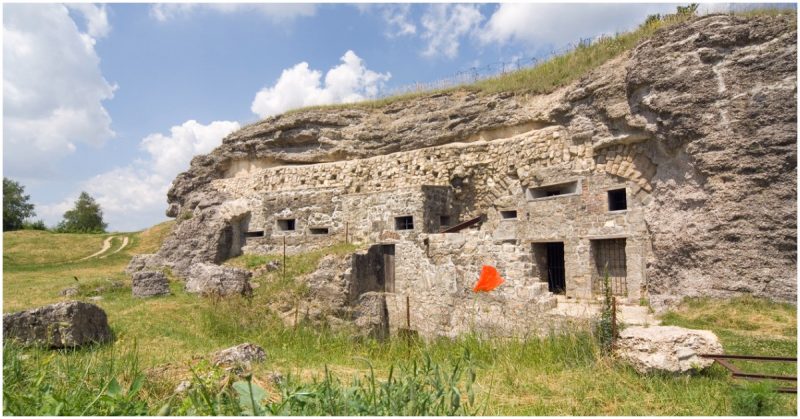Fortresses seldom feature in images of 20th-century warfare. However, in WWI, where for three years the Western Front turned into extended siege lines, large forts featured, sometimes in significant ways.
Brialmont’s Designs
Belgium’s fortifications were the most influential in Europe. Designed by military engineer Lieutenant General H. A. Brialmont, they were built from the 1850s onwards.
Brialmont’s concept was to defend important cities with rings of outlying forts to support each other and prevent an enemy from capturing strategic centers. Each fort had a central underground section made of reinforced concrete up to eight feet thick. It was then overlaid with 10 feet of earth to absorb artillery shells.
From the central section, armored cupolas held the heavy guns that enabled the fort to dominate the surrounding area. A parapet around the central section allowed defenders to fight off an assault. A deep, dry ditch lined with barbed wire and backed by artillery and machine-gun cupolas provided further defense.
Only the gun cupolas and the upper surfaces of the central section were visible above ground.
Brialmont’s designs were hugely influential. Other European nations adopted them for their own defense.
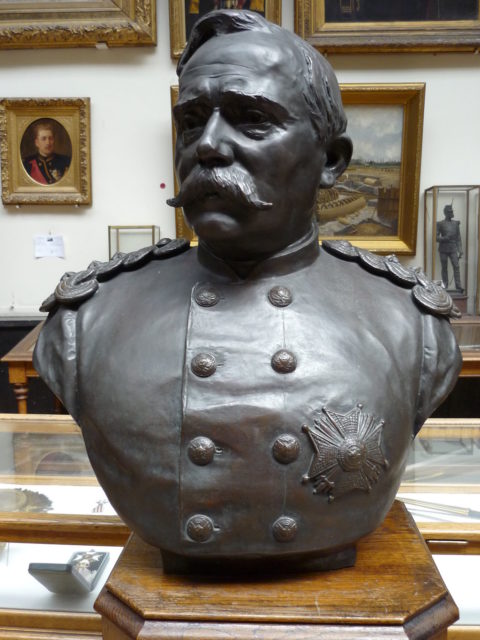
The Belgian Forts in Action
By the time he died in 1903, Brialmont had overseen the construction of three major defenses in Antwerp, Liège, and Namur. The Antwerp defenses were particularly important. The government had decided in 1887 that Antwerp would form a national redoubt; the last hold-out from which resistance could continue in the event of an invasion.
When the Germans invaded Belgium in 1914, they knew the importance of taking the forts. They were prepared, bringing their own Krupp superguns and huge Skoda mortars borrowed from Austria-Hungary. On August 5, they laid siege to the 12 forts around Liège, bombarding them with their weapons. On August 16, Liège fell.
Next in the line of attack was Namur. The superguns opened fire on August 21, and the last fort fell to an assault on the 25th.
As planned, the Belgians fell back to Antwerp. The Germans gathered their forces, including their big guns, then began an attack on September 29. Despite the provision of British and French support, it became evident the national redoubt could not hold. On October 9 the Germans demanded the city’s surrender. Its governor, realizing the futility of his situation, gave in.
In retrospect, the flaws of Brialmont’s designs had been proven. In the half century, since he started building them, the defensive engineering of the forts had been surpassed by the firepower of modern siege weapons. However, it was not the last time his style of fortifications influenced the war.
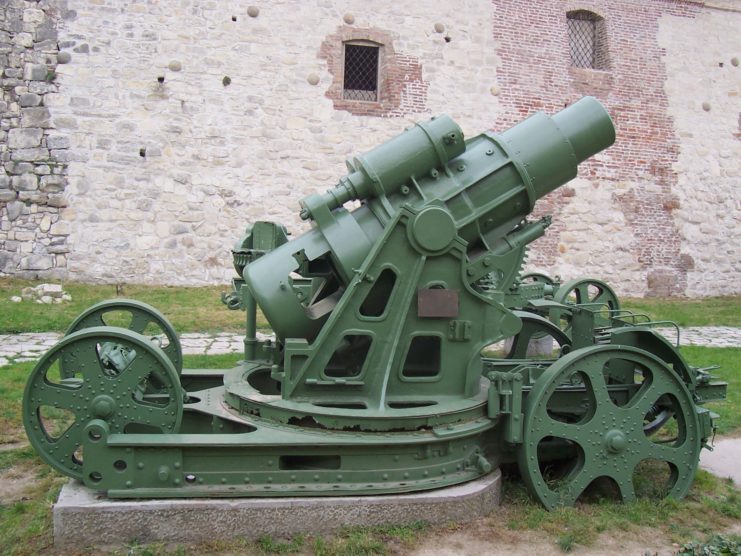
The French Forts at Verdun
Fearful of German aggression, France had imitated its northern neighbor and built forts close to the border with Germany. From Verdun in the north to Belfort in the south, they thought they had strong defensive positions.
The Belgian experience of 1914 changed French minds. Guns were pulled out of the forts, which were now seen as vulnerable.
The irony was that, with the initial war of movement over, both sides had settled into defensive positions. When the Germans attacked Verdun in 1916, the forts were a crucial part of the French defenses. True, they were not the invulnerable strongpoints their defenders had hoped, but their concrete walls, deep bunkers, and secure supply rooms made them tough to break.
At Verdun, the Germans captured Fort Douamont and Fort Vaux before being halted at Fort Souville. Attrition rather than the capture of forts defined the outcome of the battle, but for the men sheltering behind the reinforced concrete, they mattered.
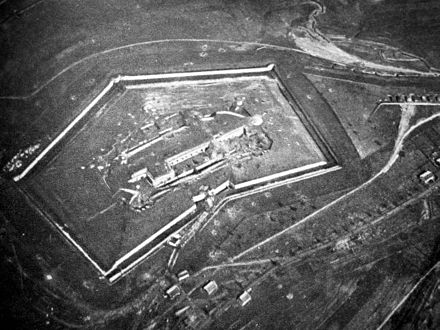
Germany
One notable feature of the French forts at Verdun was their retractable cupolas, designed by the Saint-Chamond company. German forts featured similar technology, due to the work of the engineer Hermann Gruson. The exposure of cupolas to enemy fire was a weakness of the forts, as everything else was under the ground. Gruson’s cupolas countered the problem.
The German forts never played a significant part in the conflict. The Germans spent most of the war on the offensive or defending the territory they had captured from the Allies. Their long-term defenses were never tested.
Given the fates of other forts, it was probably a good thing.
Austro-Hungarian Przemyśl
The most fought-over fort of the war was the Austro-Hungarian defensive system at Przemyśl. Begun in 1854, the network of defenses had been added to sporadically over the years, depending upon Austria-Hungary’s relations with Russia. By 1914, concrete walls, trenchworks, artillery emplacements, and bunkers all featured in the sprawling complex.
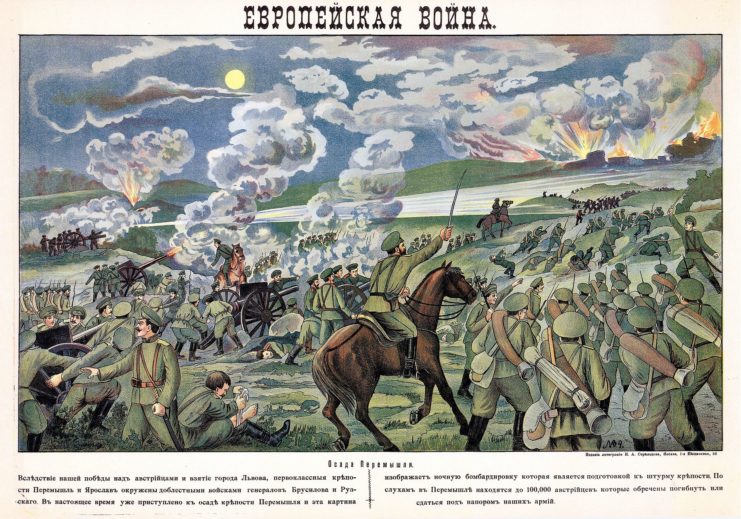
On September 17, 1914, the Russian army laid siege to Przemyśl. Following an extensive bombardment, an assault was launched on October 7 but failed, resulting in thousands of casualties.
Despite the arrival of reinforcements, the Austro-Hungarians realized they could not hold on to Przemyśl as it was about to be outflanked. They pulled many of their troops out of the area but leftover 100,000 men to delay the Russians for as long as possible.
Throughout November and December, Austro-Hungarian troops launched raids from inside the fort, attacking the Russians surrounding them. In the spring of 1915, food supplies ran low. By March 14, the outer defenses had been taken and destroyed by the Russians.
The Austro-Hungarian troops tried to break out, but they were driven back. On March 22, the Austro-Hungarians destroyed their own artillery. 119,000 men then surrendered to the Russians.
Later in the year, the Germans recaptured the fort from the Russians. By now, it was so battered as to be militarily insignificant. Its role in the war was over.
Sources:
Martin Marix Evans (2002), Over the Top: Great Battles of the First World War
Richard Holmes, ed. (2001), The Oxford Companion to Military History
Ian Westwell (2008), World War 1.
